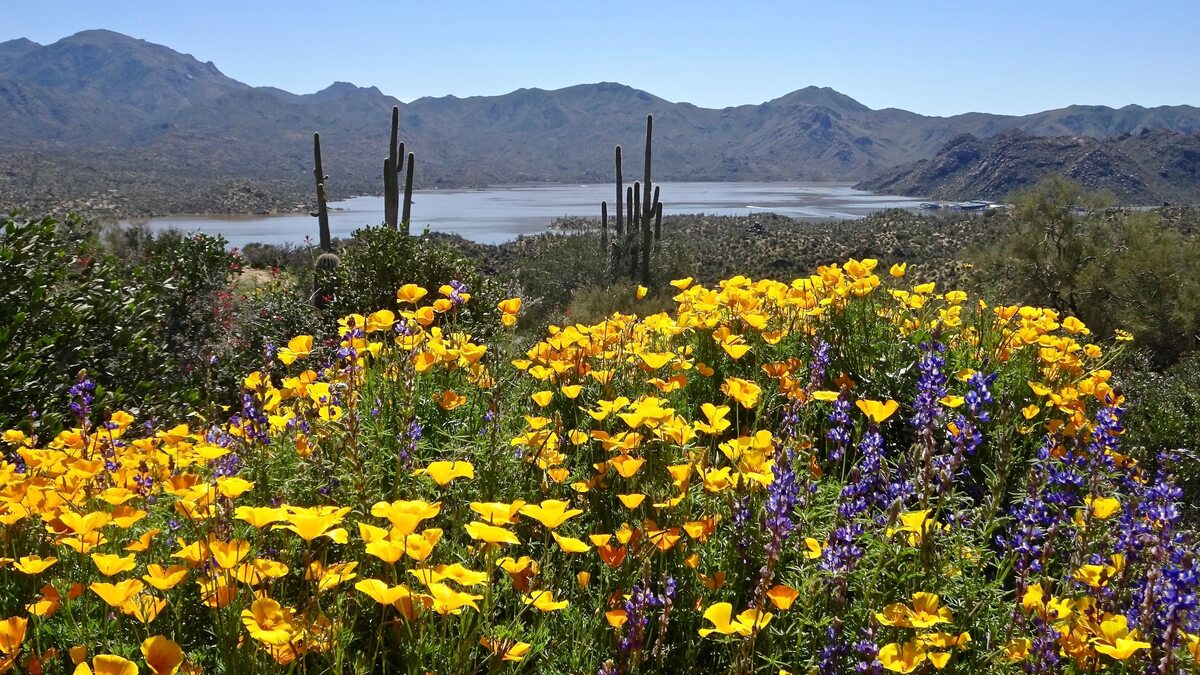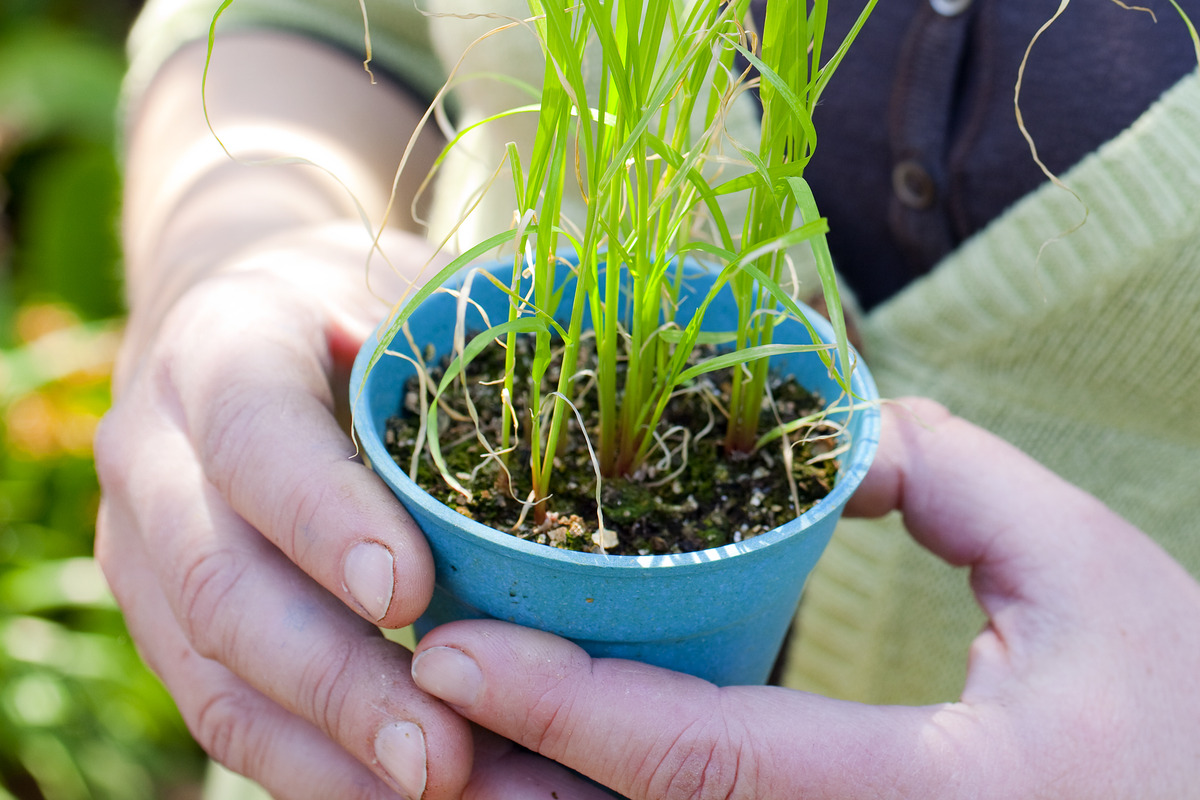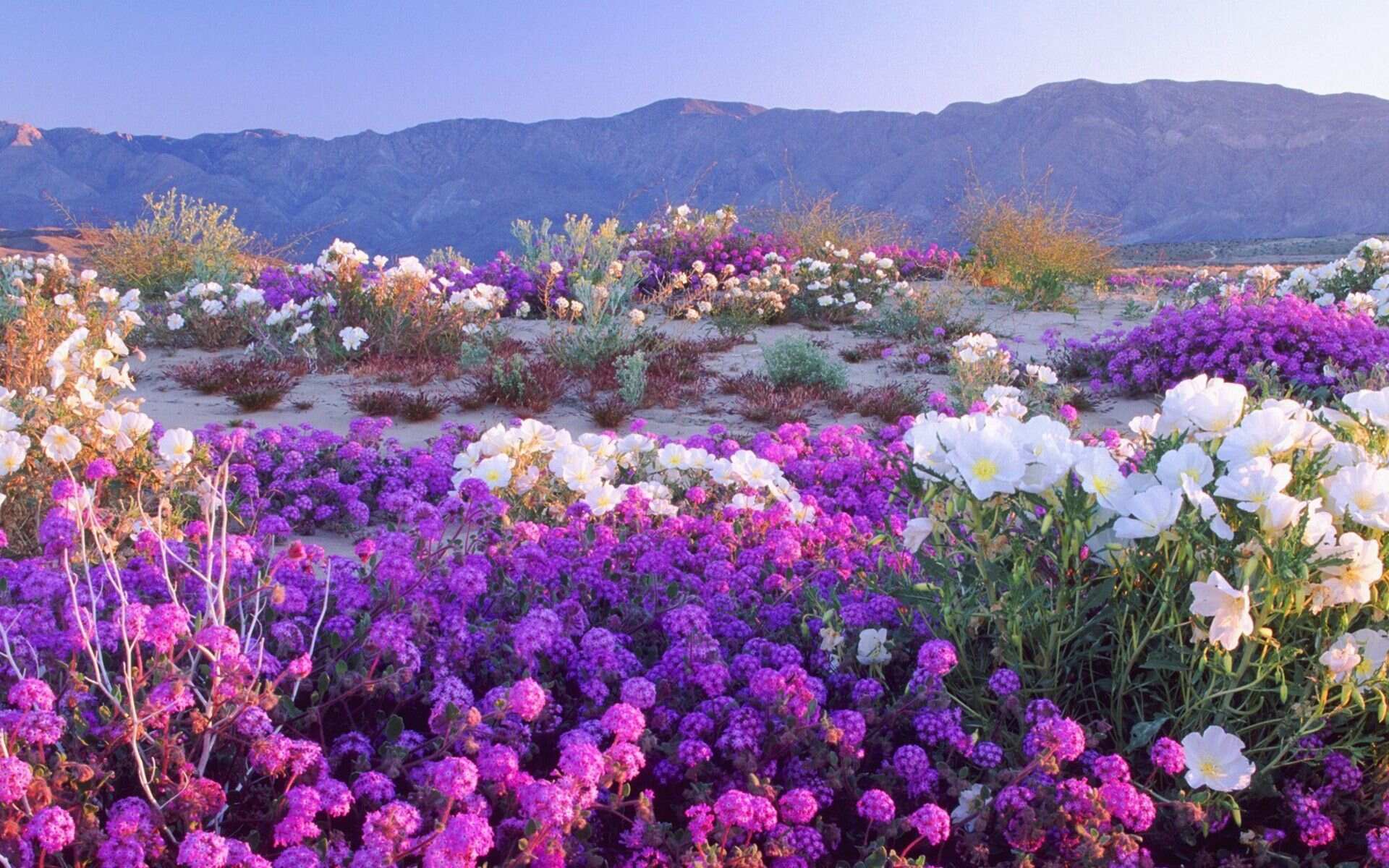Home>Gardening & Outdoor>Plant Care & Gardening Tips>When To Plant Wildflower Plugs


Plant Care & Gardening Tips
When To Plant Wildflower Plugs
Modified: January 5, 2024
Discover the best time to plant wildflower plugs with expert plant care and gardening tips. Learn how to ensure successful growth and beautiful blooms in your garden.
(Many of the links in this article redirect to a specific reviewed product. Your purchase of these products through affiliate links helps to generate commission for Storables.com, at no extra cost. Learn more)
Introduction
Welcome to the vibrant world of wildflowers! If you’re looking to add a splash of natural beauty to your garden or landscape, wildflower plugs can be a fantastic option. These small, pre-grown plants offer a convenient way to introduce a diverse array of wildflowers to your outdoor space, creating a stunning and ecologically beneficial display.
When it comes to gardening with wildflower plugs, timing is crucial. Understanding the optimal time for planting these plugs, as well as the factors that influence their successful growth, is essential for achieving a flourishing wildflower garden. In this comprehensive guide, we’ll delve into the ins and outs of wildflower plugs, including the best time to plant them and the key considerations for ensuring their long-term health.
Whether you’re a seasoned gardener or just starting out, this article will equip you with the knowledge and confidence to cultivate a thriving wildflower haven. So, let’s embark on this horticultural journey and uncover the secrets of planting wildflower plugs at the perfect time!
Key Takeaways:
- Timing is crucial when planting wildflower plugs. Spring and fall are the best seasons, providing ideal conditions for their growth and establishment.
- Care for wildflower plugs by watering, weeding, and supporting pollinators. This fosters a vibrant and resilient garden, enriching the environment and connecting with nature.
Read more: When To Plant Zoysia Grass Plugs
Understanding Wildflower Plugs
Wildflower plugs are small, pre-grown plants that are cultivated in trays or containers. They typically consist of young, well-established seedlings with developed root systems, making them a convenient option for gardeners seeking to establish wildflowers in their outdoor spaces. These plugs are often grown from seeds collected from native wildflower species, promoting biodiversity and supporting local ecosystems.
One of the key advantages of wildflower plugs is their ability to jump-start the establishment of wildflower populations. Unlike sowing seeds directly into the soil, which can be challenging due to factors such as seed depth and soil conditions, planting wildflower plugs offers a higher likelihood of successful germination and growth. Additionally, wildflower plugs provide a head start in the battle against weeds, as they can quickly form a dense cover, inhibiting weed growth and promoting a healthier environment for wildflowers to thrive.
When selecting wildflower plugs, you’ll encounter a diverse selection of species, each with its unique colors, shapes, and growing requirements. From vibrant blanket flowers to delicate purple coneflowers, the world of wildflower plugs offers an enchanting array of options to suit various garden styles and preferences.
Furthermore, wildflower plugs play a crucial role in supporting pollinators, such as butterflies, bees, and hummingbirds. By providing a rich and diverse source of nectar and pollen, these wildflowers contribute to the preservation of essential pollinator populations, fostering a balanced and healthy ecosystem.
Understanding the nature of wildflower plugs, from their growth characteristics to their ecological impact, is fundamental to harnessing their full potential in your garden. As we delve deeper into the best practices for planting and caring for wildflower plugs, you’ll gain a comprehensive understanding of how to create a flourishing wildflower haven that captivates the senses and nurtures the environment.
Factors to Consider Before Planting Wildflower Plugs
Before diving into the delightful process of planting wildflower plugs, it’s essential to consider several key factors that can significantly impact their growth and overall success in your garden. By carefully evaluating these elements, you can set the stage for a thriving wildflower display that flourishes for seasons to come.
- Site Selection: Assessing the environmental conditions of your planting site is crucial. Wildflower plugs thrive in areas with ample sunlight, well-drained soil, and minimal competition from aggressive weeds. Selecting a location that meets these criteria will provide an optimal setting for the plugs to establish themselves and thrive.
- Soil Quality: Understanding the composition and fertility of your soil is paramount. Conduct a soil test to determine its pH level and nutrient content. Wildflower plugs generally prefer slightly acidic to neutral soil and benefit from a well-balanced nutrient profile. Amending the soil as needed prior to planting can create an ideal foundation for the plugs to take root and flourish.
- Water Availability: Adequate water availability is essential for the establishment of wildflower plugs. Consider the natural moisture levels of your planting site and ensure that the plugs will receive sufficient water, especially during their initial growth stages. Additionally, be mindful of any irrigation systems or water sources that can support the plugs during dry spells.
- Companion Planting: Assessing the existing plant species in your garden can help determine suitable companion plants for the wildflower plugs. Some wildflowers thrive in the presence of specific companion plants, while others may benefit from being strategically positioned to complement surrounding flora and create a harmonious ecosystem.
- Wildflower Selection: Choosing the right wildflower species for your specific climate and growing conditions is vital. Consider native wildflowers that are well-adapted to your region, as they are more likely to thrive and support local wildlife. Additionally, select a diverse mix of wildflowers to create a visually captivating and ecologically beneficial landscape.
By carefully considering these factors and tailoring your approach to accommodate the unique needs of wildflower plugs, you can lay the groundwork for a successful and enduring wildflower garden. As we delve into the best time to plant wildflower plugs and the essential steps for their care, these considerations will form the basis of a thoughtful and strategic approach to wildflower gardening.
Best Time to Plant Wildflower Plugs
Timing plays a pivotal role in the successful establishment of wildflower plugs, and selecting the optimal season for planting is key to their long-term growth and vitality. While the specific timing may vary based on your location and climate, there are general guidelines to consider when determining the best time to plant wildflower plugs.
Spring and fall are typically the most favorable seasons for planting wildflower plugs in many regions. These periods offer favorable conditions for the plugs to acclimate and establish themselves before facing the more extreme temperatures of summer or winter. Let’s explore the distinct advantages of planting wildflower plugs during these seasons:
- Spring Planting: Planting wildflower plugs in the spring allows them to take advantage of the season’s mild temperatures and increased daylight. This enables the plugs to initiate robust growth and establish healthy root systems before the heat of summer sets in. Spring planting also aligns with the natural growth cycles of many wildflowers, providing them with the ideal conditions to flourish.
- Fall Planting: Fall presents another opportune window for planting wildflower plugs. As temperatures begin to cool and rainfall becomes more abundant in many regions, fall planting allows the plugs to benefit from favorable growing conditions without the stress of summer heat. Additionally, planting in the fall provides the plugs with ample time to develop strong root systems before the onset of winter, setting the stage for vigorous growth in the following spring.
When determining the precise timing for planting wildflower plugs, it’s essential to consider your local climate and weather patterns. Factors such as the average date of the last frost in the spring and the onset of consistent cooler temperatures in the fall can guide your planting schedule. Consulting with local gardening resources or cooperative extension services can provide valuable insights into the optimal timing for wildflower plug planting in your area.
By strategically aligning the planting of wildflower plugs with the most conducive seasons, you can maximize their chances of successful establishment and long-term vitality. As we delve into the practical aspects of planting and caring for wildflower plugs, this thoughtful timing will set the stage for a breathtaking and sustainable wildflower garden that delights both you and the surrounding ecosystem.
Plant wildflower plugs in the spring or fall when the soil is moist and the weather is mild. Avoid planting during hot, dry periods. This will give the plugs the best chance of establishing and thriving.
How to Plant Wildflower Plugs
Planting wildflower plugs is an exciting and rewarding endeavor that allows you to bring a burst of natural beauty to your outdoor space. By following a few essential steps, you can ensure that the plugs are seamlessly integrated into your garden, setting the stage for a stunning wildflower display. Here’s a comprehensive guide on how to plant wildflower plugs with care and precision:
- Prepare the Planting Site: Begin by preparing the planting area to provide an optimal environment for the wildflower plugs. Clear the site of any existing vegetation, and ensure that the soil is well-drained and free of debris. If necessary, amend the soil with organic matter to improve its structure and fertility.
- Arrange the Plugs: Prior to planting, arrange the wildflower plugs in your desired pattern or design, considering factors such as color combinations, plant heights, and spacing requirements. This strategic planning will contribute to a visually appealing and harmonious wildflower display.
- Planting Technique: Dig individual holes for each wildflower plug, ensuring that the holes are deep and wide enough to accommodate the root systems without crowding or bending them. Gently remove the plugs from their containers, taking care to preserve the root structures, and place them in the prepared holes at the appropriate depth. Backfill the holes with soil, firming it gently around the plugs to secure them in place.
- Watering and Mulching: After planting the wildflower plugs, thoroughly water the entire planting area to settle the soil and provide essential moisture to the plugs. Apply a layer of organic mulch, such as shredded bark or straw, to conserve soil moisture, suppress weed growth, and protect the plugs’ roots from temperature fluctuations.
- Monitoring and Care: Keep a close eye on the newly planted wildflower plugs, monitoring their moisture levels and overall health. Water the plugs as needed, especially during dry spells, and remove any competing weeds that may emerge. Providing attentive care during the initial stages of growth will support the plugs as they establish themselves in their new environment.
By following these steps and approaching the planting process with diligence and care, you can ensure that the wildflower plugs have the best possible start in your garden. As they take root and begin to flourish, the vibrant colors and graceful forms of the wildflowers will transform your outdoor space into a captivating haven for both you and the surrounding wildlife.
Read more: When To Plant Wildflower Seeds In Michigan
Caring for Wildflower Plugs
Once your wildflower plugs are nestled in their new home, providing attentive care is essential to support their growth and ensure a thriving and vibrant wildflower display. By implementing thoughtful maintenance practices, you can nurture the plugs as they establish themselves and contribute to the overall health of your garden ecosystem. Here are key strategies for caring for wildflower plugs:
- Watering: Consistent and adequate moisture is crucial for the initial establishment of wildflower plugs. Monitor the soil moisture regularly, especially during dry periods, and water the plugs as needed to keep the soil evenly moist. Avoid overwatering, as excessive moisture can lead to root rot and other issues.
- Weed Control: Keep the area around the wildflower plugs free from competing weeds that can hinder their growth. Regularly inspect the planting site and remove any invasive plants that may encroach on the space occupied by the wildflower plugs, allowing them to thrive without competition.
- Fertilization: While wildflower plugs generally do not require heavy fertilization, applying a light, balanced fertilizer during their initial growth stages can provide a nutrient boost. Opt for a slow-release, organic fertilizer to support the plugs’ development without risking excessive nutrient levels in the soil.
- Pruning and Deadheading: As the wildflowers begin to bloom, deadhead spent flowers to encourage continuous blooming and prevent the plants from expending energy on seed production. Additionally, light pruning may be necessary to maintain the desired shape and size of the wildflower plants, promoting a tidy and well-maintained appearance.
- Monitoring for Pests and Diseases: Keep a watchful eye on the wildflower plugs for signs of pest infestations or disease. Early detection of issues such as aphids, powdery mildew, or fungal infections allows for prompt intervention, minimizing potential damage to the plants and preserving their overall health.
- Supporting Pollinators: Wildflower plugs play a vital role in supporting pollinators such as bees, butterflies, and hummingbirds. Create a welcoming environment for these essential creatures by incorporating additional native plants that provide nectar and pollen, ensuring a diverse and abundant food source for pollinators throughout the growing season.
By incorporating these care practices into your gardening routine, you can foster a flourishing and resilient wildflower garden that captivates the senses and contributes to the ecological balance of your outdoor space. As the wildflower plugs mature and bloom, their enchanting beauty and ecological significance will enrich your garden and inspire a deeper connection with the natural world.
Conclusion
Embarking on the journey of planting and caring for wildflower plugs opens a gateway to a world of natural wonder and ecological harmony. By understanding the unique nature of wildflower plugs and the factors that influence their successful growth, you can create a captivating and sustainable wildflower garden that enriches both your outdoor space and the surrounding environment.
From the meticulous preparation of the planting site to the thoughtful selection of native wildflower species, every step in the process contributes to the creation of a vibrant and biodiverse ecosystem. The best time to plant wildflower plugs, whether in the rejuvenating embrace of spring or the gentle transition of fall, sets the stage for their flourishing and enduring presence in your garden.
As you carefully plant and nurture the wildflower plugs, you are not only cultivating a stunning visual tapestry of colors and forms but also providing essential support for pollinators and local wildlife. The careful tending of these delicate blooms, from watering and weeding to fostering a pest-resistant environment, ensures that the wildflower plugs can thrive and contribute to the overall health of your garden.
Ultimately, the beauty and vitality of a wildflower garden extend far beyond its visual appeal. It becomes a sanctuary for pollinators, a source of inspiration and tranquility, and a testament to the harmonious coexistence of human cultivation and natural splendor. By embracing the art of wildflower gardening, you become a steward of the land, nurturing a living canvas that reflects the timeless rhythms of the natural world.
So, as you embark on your wildflower gardening journey, may each carefully planted plug and each tenderly tended bloom serve as a testament to the transformative power of nature and the enduring beauty of a well-tended garden.
Frequently Asked Questions about When To Plant Wildflower Plugs
Was this page helpful?
At Storables.com, we guarantee accurate and reliable information. Our content, validated by Expert Board Contributors, is crafted following stringent Editorial Policies. We're committed to providing you with well-researched, expert-backed insights for all your informational needs.















0 thoughts on “When To Plant Wildflower Plugs”